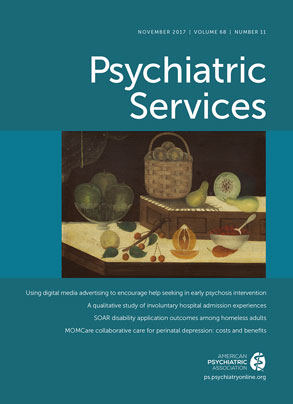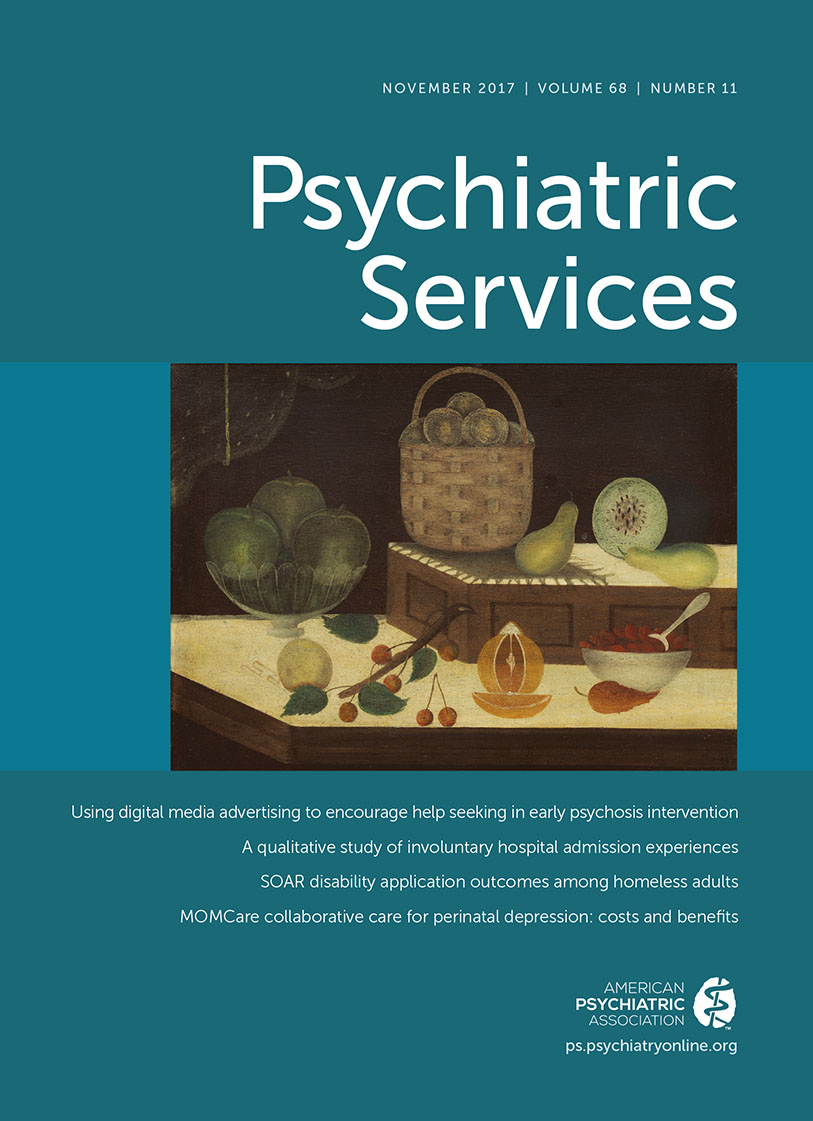Missed visits, often referred to in health care settings as no-shows, negatively affect health care systems by contributing to inefficiency and increased health care costs and portend worse clinical outcomes for the patients themselves (
1). Moreover, missed visits continue to be common. In the Veterans Health Administration (VHA) alone, nine million visits each year are classified as no-shows (
2).
To improve patient engagement and attendance, most health systems have implemented appointment reminders, which have a well-documented evidence basis (
3–
6). In addition, a substantial body of research has identified individual-level and health system characteristics associated with missed visits, which has helped to target populations for intervention. However, the impact of reminders on appointment attendance and its association with the type of message delivery to patients is less clear. Elucidating this impact is vital because research suggests that reminders—be they delivered by phone call or text message—often do not reach their targeted audiences (
7–
9). Thus, in this study, we aimed to determine to what extent receipt of phone appointment reminders (direct conversation versus voice mail) affects appointment attendance rates.
The Study
Participants consisted of primary care patients with depression at a Veterans Health Administration (VHA) health care system in the Pacific Northwest who had completed a phone screener and indicated interest in participating in a research study on the involvement of family and friends in depression treatment. Participants were eligible for this study if they had one or more in-person primary care visits in the past year, probable major depression (eight-item Patient Health Questionnaire [PHQ-8] score ≥9), and at least one significant recent interpersonal relationship. Participants were excluded if they had severe hearing impairment, lacked regular access to a phone, or had a diagnosis of a bipolar disorder, psychosis, or a neurocognitive disorder (specifically, dementia) in their medical record in the prior two years.
After completing the phone screener, we immediately scheduled interested participants for research study appointments. We used the data management program REDCap to log and track phone reminders, with two reminder calls by one research staff member (HEM) scheduled for each participant, with one placed the Friday before the appointment and a second on the day of the appointment. If a participant rescheduled the appointment, she or he would receive additional reminders. The reminders followed a standardized script, which identified the caller and reviewed the date, time, purpose, and location of the appointment. Reminder outcome was classified in one of three ways: directly speaking with the participant or a designee in the same household (live reminder), leaving a voice mail message (message reminder), or no answer with no ability to leave a message (no answer). We used VHA administrative records and survey responses to ascertain patient characteristics. The institutional review board of the Veterans Affairs Portland Health Care System approved this study.
For bivariate comparisons between reminder call and appointment attendance, we used chi-square analysis. We constructed a multivariate generalized linear model, adjusting for participant age, distance to facility, and depression severity, to examine relationships between reminder call outcome and appointment attendance. We examined the effects of the first reminder call and of the second (or final) reminder call. Because results were similar in both analyses and the final reminder call was most proximal to our outcome, we present the latter results. All analyses were conducted in Stata, version 14.0.
Findings and Implications
We completed phone reminders for 250 consecutive patients from December 2015, to February 2017, of whom 221 (88%) attended their appointments. Patients were 55.8±14.4 (M±SD) years old and, on average, had a PHQ-8 score of 15.4 out of 24, and lived 14.3 miles from the hospital. Ninety-seven percent (N=243) of the patients were male. Race-ethnicity and education information was available for 220 of the 250 patients: 80% (N=175) were white, 4% (N=8) were African American, 4% (N=8) were Native American, and 13% (N=29) were multiracial or other categories; 16% (N=34) of the patients had a high school diploma or less, 63% (N=139) had vocational training or some college, and 21% (N=47) had a college degree or higher.
Live reminders were associated with the lowest no-show rate (3%), whereas no-show rates were significantly higher for message reminders (24%) and no answer (39%). Compared with live reminders, message reminders (relative risk [RR]=7.4, p<.001) and no answer (RR=13.9, p<.001) were each correlated with significantly lower attendance after adjustment for potential confounders (
Table 1). Furthermore, compared with patients who received a message reminder, those who were not contacted at all had significantly higher no-show rates (p=.035).
In this clinical sample of primary care patients, we found that the risk of missed appointments substantially increased when a phone appointment reminder resulted in no answer or in leaving a message or voice mail. The estimated difference in attendance rate between patients receiving direct contact versus no answer was very large in both absolute (35%) and relative (over tenfold) terms. In addition, results emphasize that a message is not enough because patients in the message-receiving group also had a markedly elevated rate of missing their appointment.
In an era in which people seem progressively less likely to answer the phone, a declining ability to directly deliver reminders to patients has real-world implications for appointment reminder implementation. If health care systems were to track information on delivery of appointment reminders, we believe this information could be used in two potentially beneficial ways. First, knowing who does not directly receive a reminder could identify patients at high risk of missing appointments. Second, and perhaps more important, this information could identify a target group of patients who would benefit from additional or alternative reminder strategies.
As many health systems move toward reminders delivered by text message, this study also suggests strategies that can be used to optimize text message reminder systems. In particular, we suspect that two-way reminders (those that ask for a reply from the patient confirming or declining the appointment) may be more effective than one-way reminders. This has already been demonstrated in a meta-analysis of interventions evaluating text message reminders for medication adherence (
10). Given the likelihood that patients who do not reply to text message reminders are at elevated risk of missed visits, health care systems could then design, implement, and evaluate interventions targeting these patients with additional reminders (such as a live telephone call).
This study’s focus on one of the practical aspects of implementation of appointment reminder calls is relevant to consideration of quality improvement practices. The quality improvement literature highlights several critical tools that are useful in improving a care process. These tools include longitudinal data recording, team learning, and tests of changes via plan-do-study-act (PDSA) cycles (
11). This study supports the utility of PDSA cycles related to appointment reminder processes. For example, one iteration of a PDSA cycle could focus on an intervention that sends text messages to patients who tend not to answer their phones.
One does not need to be a researcher with a “capital R” to identify these types of quality improvement issues. Our methods were not complex, and data analysis was fairly straightforward. Rather, what seems most critical (and ideally what should be in the “little r” researcher in us all) is having the curiosity to consider what might contribute to variations in outcomes and build evaluation of these outcomes into normal practice. As we saw in the case of appointment reminders and attendance, doing so can identify major opportunities for improvement.

